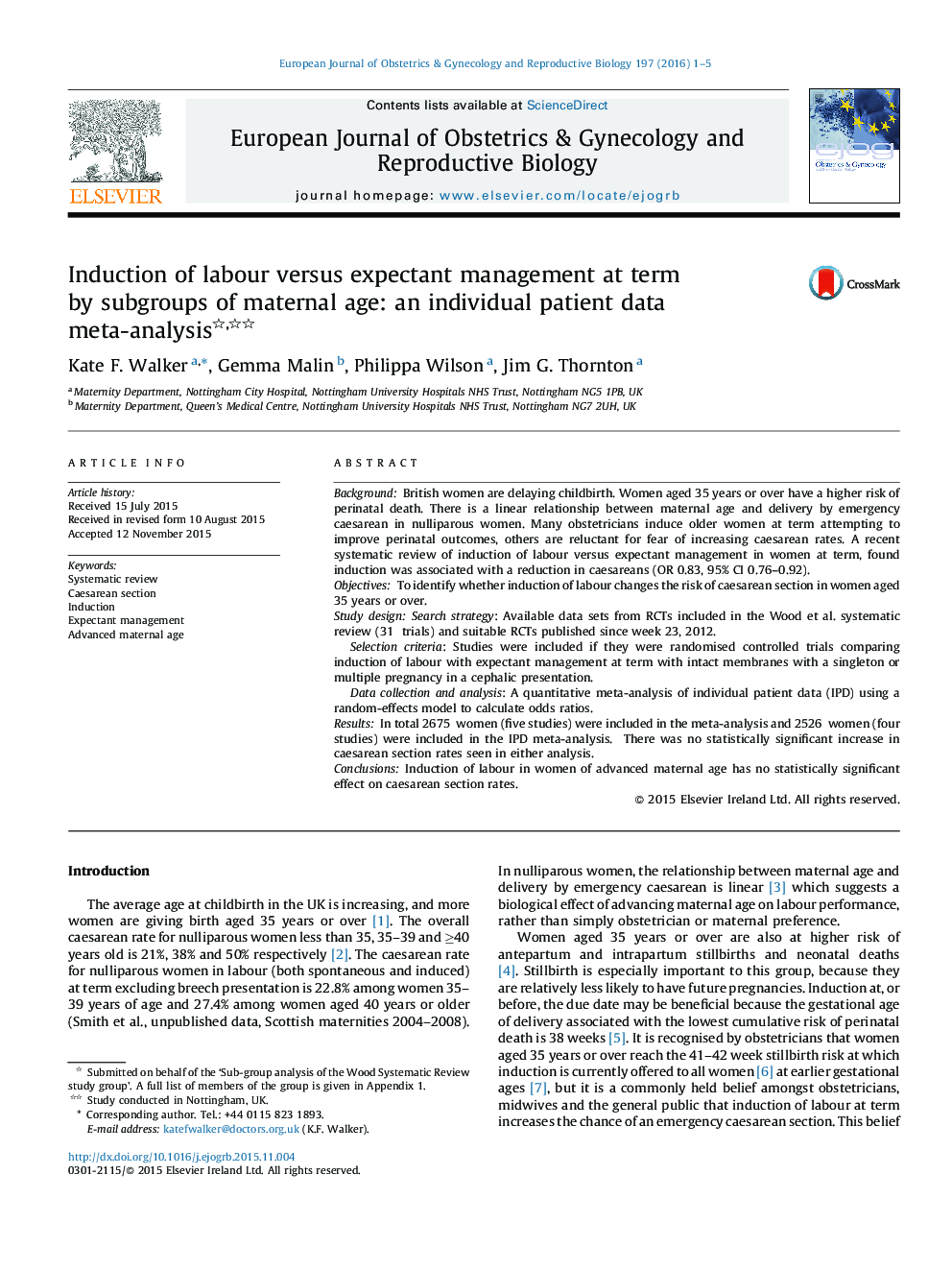| Article ID | Journal | Published Year | Pages | File Type |
|---|---|---|---|---|
| 3919440 | European Journal of Obstetrics & Gynecology and Reproductive Biology | 2016 | 5 Pages |
BackgroundBritish women are delaying childbirth. Women aged 35 years or over have a higher risk of perinatal death. There is a linear relationship between maternal age and delivery by emergency caesarean in nulliparous women. Many obstetricians induce older women at term attempting to improve perinatal outcomes, others are reluctant for fear of increasing caesarean rates. A recent systematic review of induction of labour versus expectant management in women at term, found induction was associated with a reduction in caesareans (OR 0.83, 95% CI 0.76–0.92).ObjectivesTo identify whether induction of labour changes the risk of caesarean section in women aged 35 years or over.Study designSearch strategy: Available data sets from RCTs included in the Wood et al. systematic review (31 trials) and suitable RCTs published since week 23, 2012.Selection criteria: Studies were included if they were randomised controlled trials comparing induction of labour with expectant management at term with intact membranes with a singleton or multiple pregnancy in a cephalic presentation.Data collection and analysis: A quantitative meta-analysis of individual patient data (IPD) using a random-effects model to calculate odds ratios.ResultsIn total 2675 women (five studies) were included in the meta-analysis and 2526 women (four studies) were included in the IPD meta-analysis. There was no statistically significant increase in caesarean section rates seen in either analysis.ConclusionsInduction of labour in women of advanced maternal age has no statistically significant effect on caesarean section rates.
